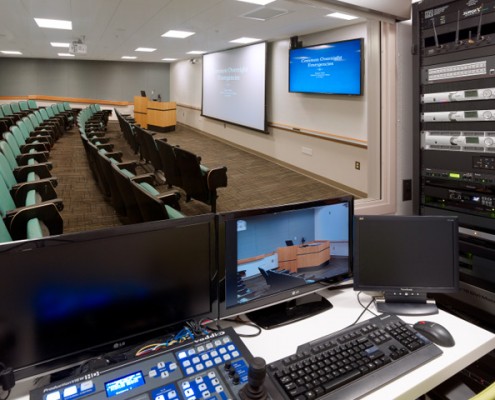Transforming Transmission with Cutting-edge Audio via IP Technologies toward a Connected Tomorrow
Transforming Transmission with Cutting-edge Audio via IP Technologies toward a Connected Tomorrow
Blog Article
The world of broadcasting is undergoing a major transformation due to innovative sound via IP (AoIP) technologies. Such advancements are changing the way audio content is produced, distributed, and received. Audio over IP is defined as the approach of sending audio streams over a computer system, using Internet Protocol (IP) rather than traditional analog techniques. This transition not only enhances the standard of audio transmission but also offers broadcasters with more flexibility and authority over their programming.
A single major advantage of audio over IP technology is its capability to connect multiple devices and systems efficiently. Classic broadcasting frequently depended on complex cabling and physical links, which could be cumbersome and restrictive. With AoIP, broadcasters can readily connect microphones, mixers, and other equipment through a shared network. This integration allows for off-site broadcasting and live streaming from almost any location, making it simpler to reach listeners across the globe. As a consequence, broadcasters can respond quickly to current issues and audience requests, leading to more dynamic and captivating content.
Moreover, AoIP systems facilitates superior audio standards that enhance the listening encounter. In contrast to conventional broadcasting techniques, which may diminish sound quality, audio over click here for more IP can maintain the purity of the audio signal throughout the delivery process. This means that listeners can enjoy clearer and more detailed sound, whether they are tuning in via radio, broadcasting online, or using portable devices. The capability to provide premium audio is particularly crucial for musical and discussion programs, where each nuance matters to the listeners.
Moreover, the adoption of audio over IP systems can lead to cost savings for media companies. By leveraging existing infrastructure infrastructure, companies can eliminate the need for costly hardware and large-scale cabling. This not only reduces upfront costs but also lowers maintenance costs over time. Broadcasters can allocate resources more efficiently, investing in content creation and talent development. As a result, the entire broadcasting industry can gain from enhanced creativity and inventiveness, as financial resources are redirected toward improving programming and interacting with listeners.
In summary, the transition towards audio over IP systems is changing the media landscape. By enabling seamless connections, enhancing audio quality, and reducing costs, AoIP is paving the way for a better integrated future in broadcasting. As media organizations continue to adjust to these changes, they will be better equipped to meet the demands of their listeners, produce captivating programs, and remain competitive in an ever-evolving industry. The future of broadcasting is bright, and audio over IP will take a key role in defining how we experience audio programming in the years to follow.